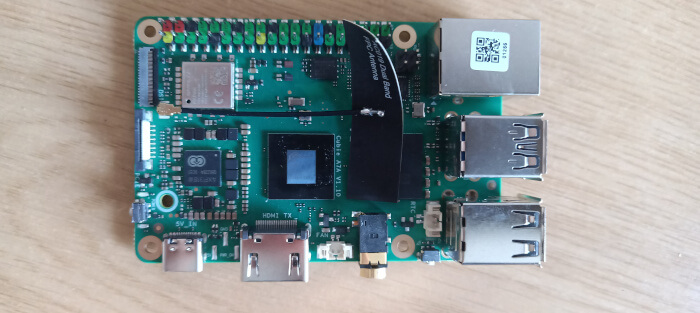This is a new series looking at the Radxa Cubie A7A single board computer. It’s billed as an ultra-compact yet feature-rich SBC designed to deliver powerful performance in space-constrained environments.
Powered by the Allwinner A733 SoC, the Cubie A7A features a hybrid octa-core high-performance CPU (dual-core Arm Cortex-A76 and hexa-core Arm Cortex-A55 big.LITTLE architecture, up to 2.0GHz), integrated 3 TOPS NPU, and Imagination BXM-4-64 MC1 GPU, providing robust AI and multimedia processing capabilities.
For this article in the series I have run a variety of benchmarks on the Cubie A7A and compare its results to other single board computers (both ARM and RISC-V) as well as an Intel N100 Mini PC. The tests are run using the Phoronix Test Suite unless stated otherwise.
I’ll mainly focus on processor benchmarks for this article, but there are a few other tests included.
Explanation of the legends used in the charts below:
Cubie A7A – Radxa Cubie A7A (ARM). This SBC also has a RISC-V co-processor.
ROCK 5T – Radxa ROCK 5T (ARM)
ROCK 4D – Radxa ROCK 4D (ARM)
RPI5 – Raspberry Pi 5 (ARM architecture)
OPi RV2 – Orange Pi RV2 (RISC-V architecture)
OPi5 Max – Orange Pi 5 Max (ARM)
OPi R2S – Orange Pi R2S (RISC-V)
N100 – Intel N100 (x86_64 architecture)
BPI-F3 – Banana Pi BPi-F3 (RISC-V )
AIBOX-3588S – Firefly AIBOX-3588S (ARM)
Let’s kick off with processor benchmarks.
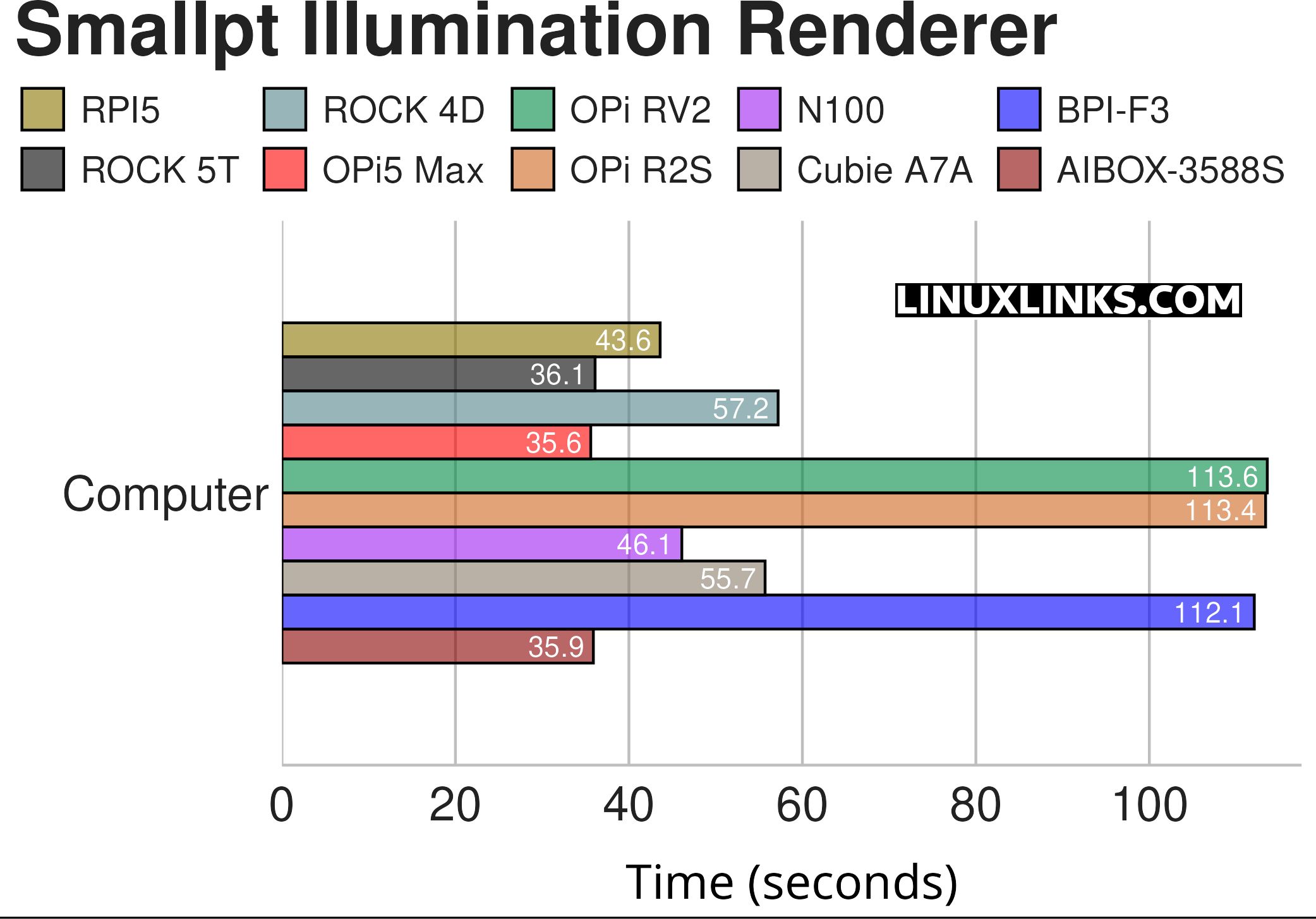
$ phoronix-test-suite benchmark smallpt
Smallpt is a C++ global illumination renderer written in less than 100 lines of code. Global illumination is done via unbiased Monte Carlo path tracing and there is multi-threading support via the OpenMP library.
With this benchmark, a shorter time indicates better performance.
The Cubie completes the benchmark more than twice as fast as the RISC-V SBCs, and it’s even slightly faster than Radxa’s ROCK 4D here.
The machines completing the benchmark faster than the Cubie are more expensive (and in some cases much more expensive). For example, the Orange Pi 5 Max 8GB costs around £93, whereas the Cubie A7A 8GB costs only £62. It’s hard to do direct comparisons with the Cubie A7A 6GB as it’s not a popular RAM size. But the 6GB model retails for £55 whereas even the Raspberry Pi 5 4GB costs £57.30. Bear that in mind when comparing benchmarks.

$ phoronix-test-suite benchmark compress-pbzip2
This test measures the time needed to compress a file (a .tar package of the Linux kernel source code) using BZIP2 compression.
Again a shorter time indicates better performance. Again the Cubie A7A is more than twice as fast as the RISC-V boards, and completes the benchmark faster than the ROCK 4D.
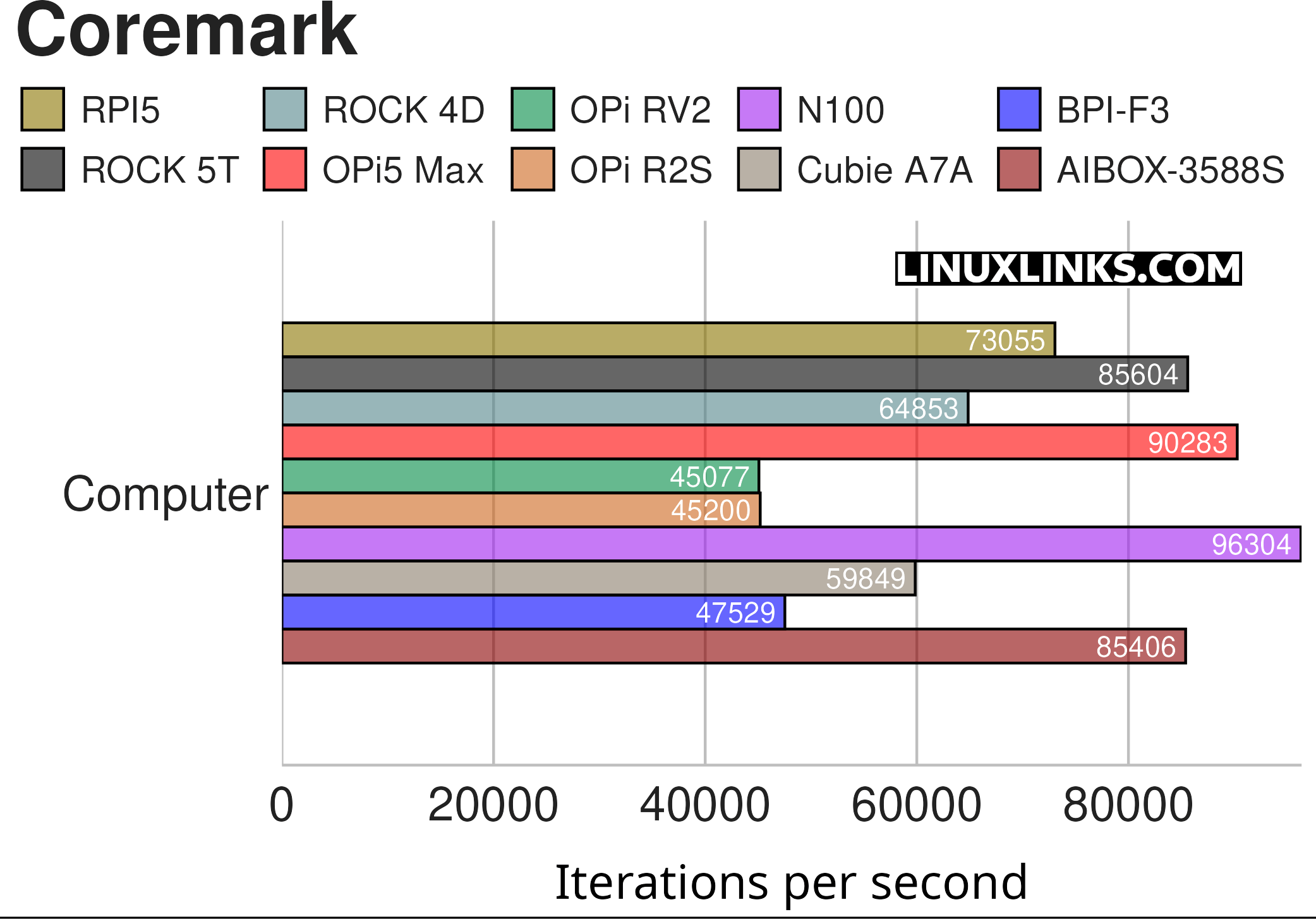
$ phoronix-test-suite benchmark coremark
Coremark is a benchmark that measures the performance of central processing units (CPU) used in embedded systems.
Coremark performance is good but this time the A7A is pipped by the ROCK 4D.
Let’s move on to RAM performance.
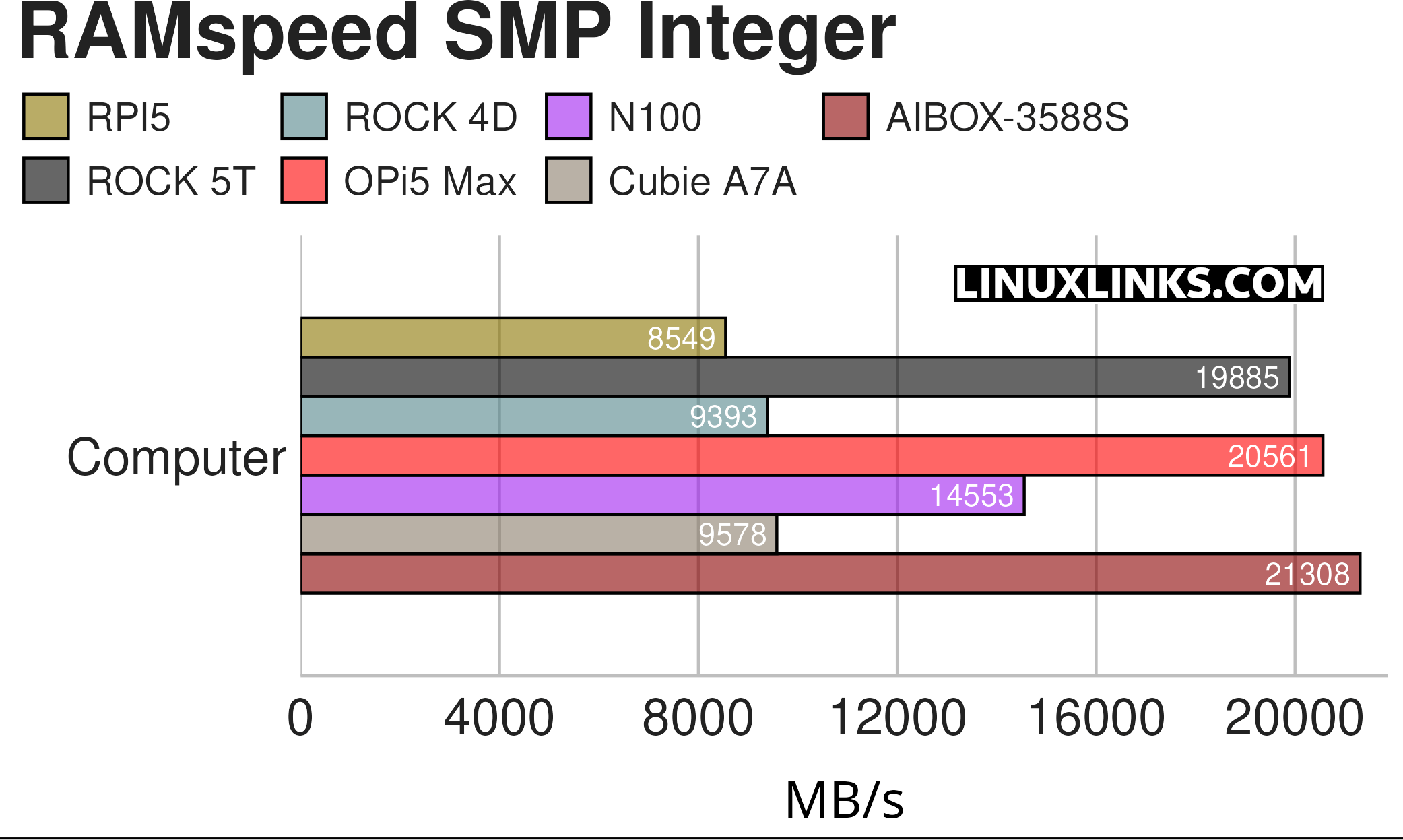

$ phoronix-test-suite benchmark ramspeed
RAM performance is on par with the Raspberry Pi 5 (which only has DDR4 RAM) and the ROCK 4D.
I’ve also run a few additional benchmarks on the Cubie A7A.
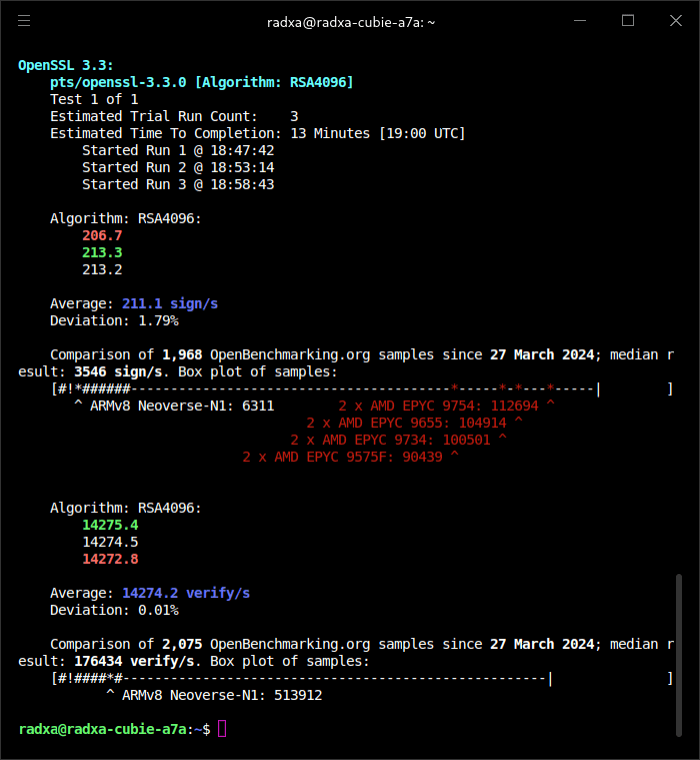
$ phoronix-test-suite benchmark openssl
OpenSSL is an open-source toolkit that implements SSL (Secure Sockets Layer) and TLS (Transport Layer Security) protocols. This test profile makes use of the built-in “openssl speed” benchmarking capabilities.
I’ve restricted testing to the RSA4096 algorithm.
The Cubie A7A scores an average of 211.1 sign/s and 14274.2 verify/s which compares to the ROCK 4D’s 250.1 sign/s and 17592 verify/s.
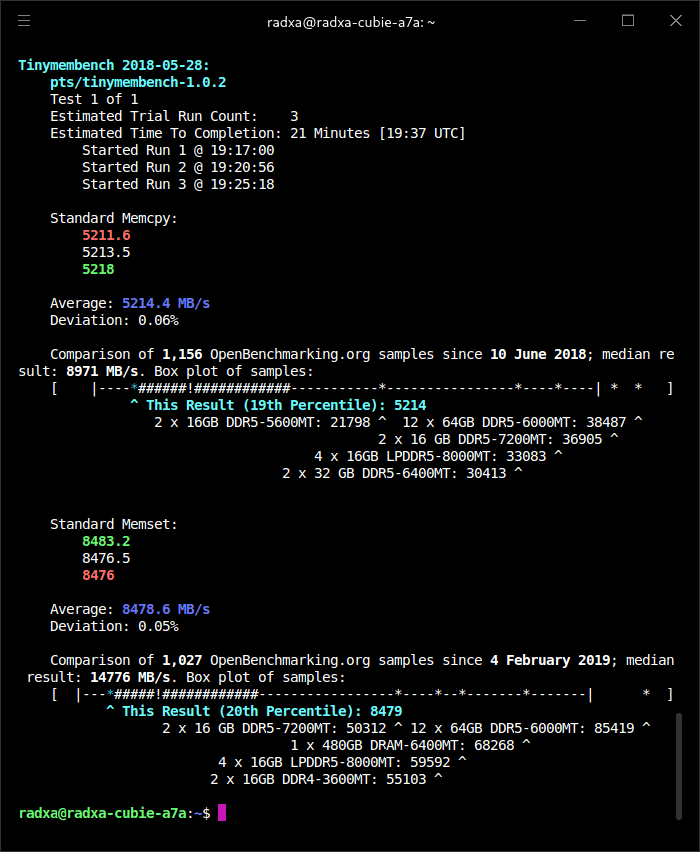
$ phoronix-test-suite benchmark tinymembench
This benchmark tests the system memory (RAM) performance.
In the next article in the series I’ll test power consumption under a variety of workloads.
Complete list of articles in this series:
| Radxa Cubie A7A | |
|---|---|
| Introduction | Introduction to the series and interrogation of the Cubie A7A |
| Benchmarks | Benchmarking the Cubie A7A |
| Power | I compare the Cubie A7A's power consumption to other machines |
| Radxa OS | A Debian-based Linux distribution with KDE Plasma |
